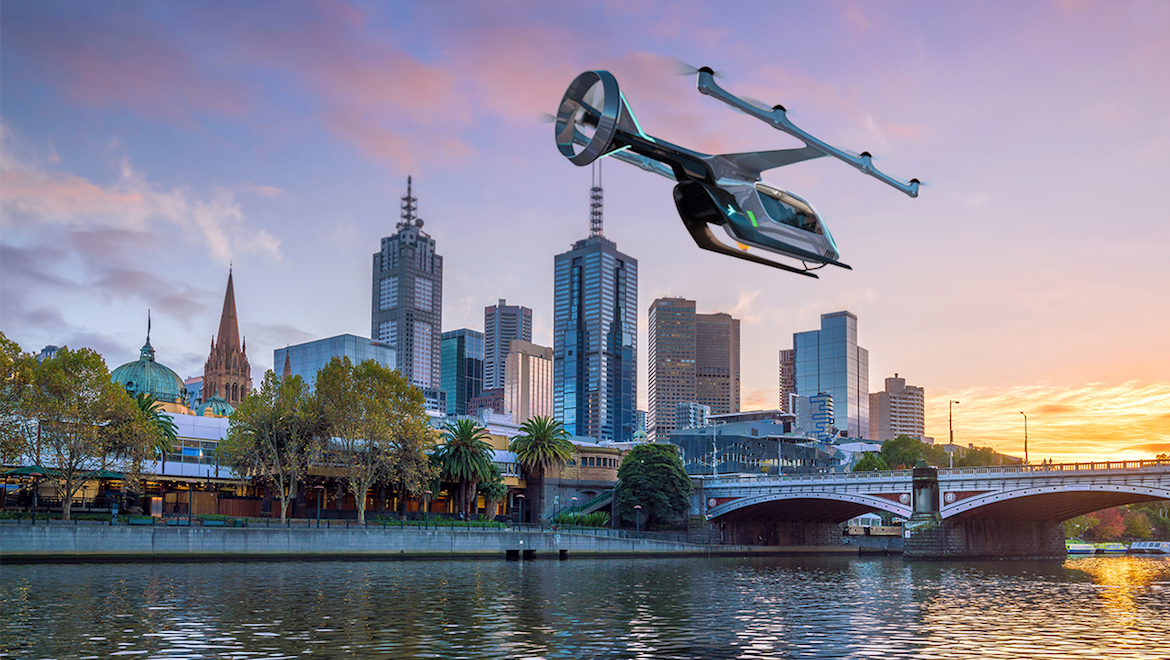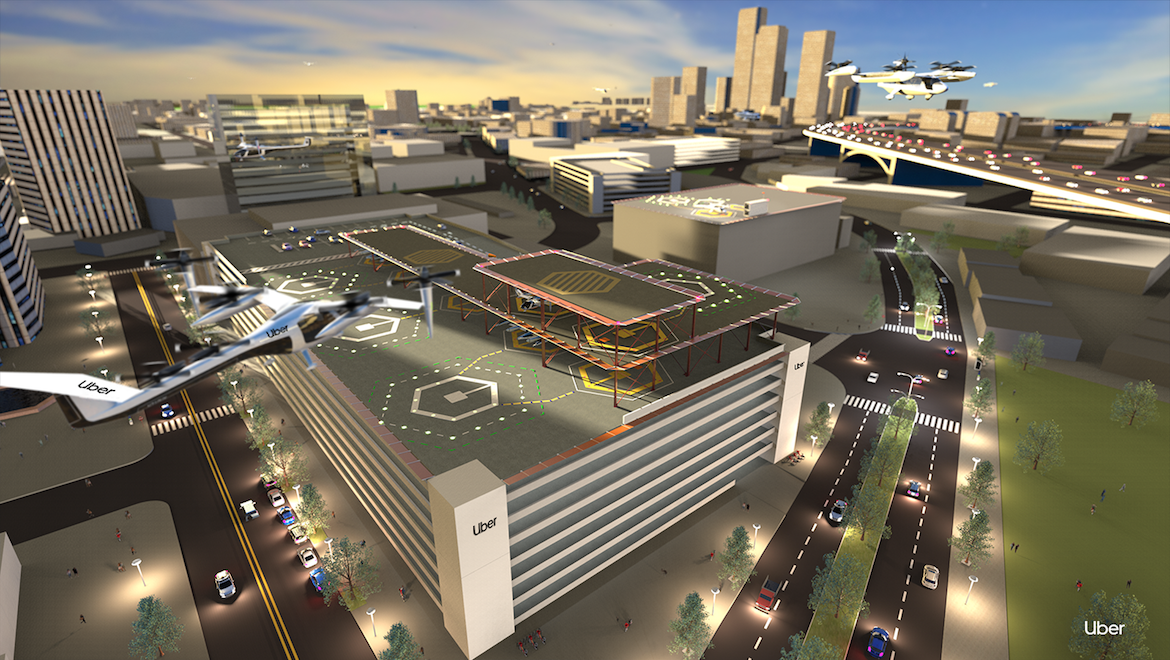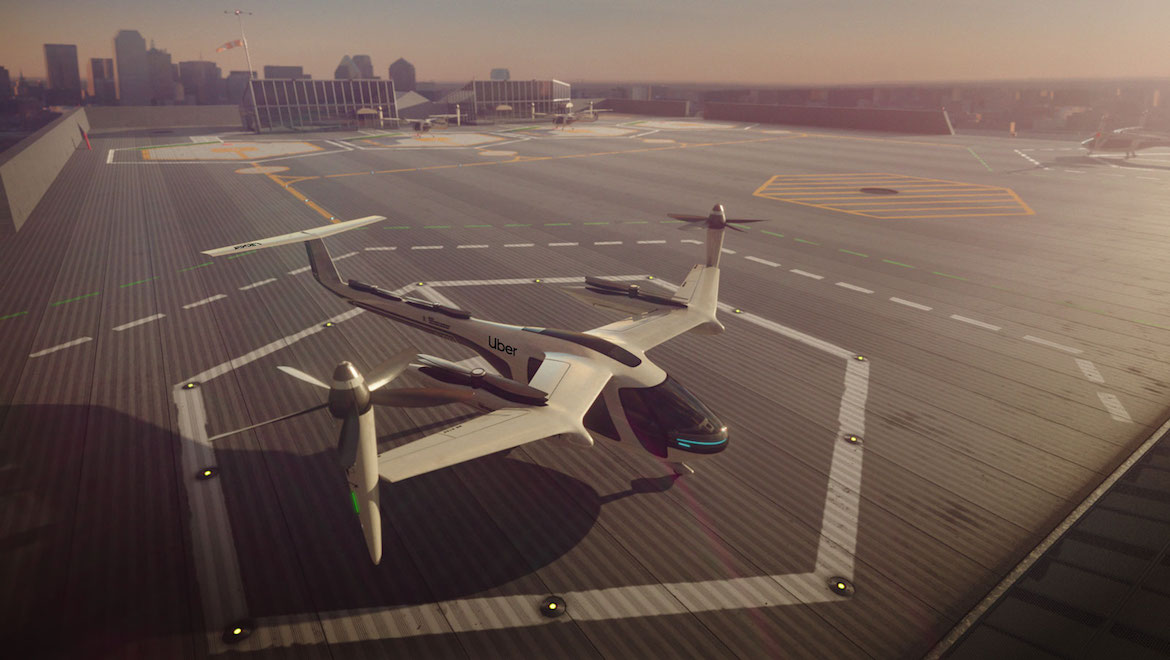
Melbourne has been chosen as the first pilot market outside the United States for Uber’s flying air taxis.
Uber regional general manager for Australia, New Zealand and North Asia Susan Anderson announced Melbourne as the first international test market at the third Uber Elevate summit in Washington D.C. on Tuesday (US time). Australia was on a shortlist announced at the 2018 summit alongside Brazil, France, India and Japan.
The company said it planned to start test flights in 2020, with commercial operations at its test cities planned for 2023. Dallas and Los Angeles were the first two pilot sites.
Anderson said the Victorian state government was “highly supportive” of the plan for Melbourne and would be working in partnership with Uber to progress the first international trial.
“Since we entered the market in 2012, Australians have embraced Uber wholeheartedly,” Anderson said in a statement.
“Today, over 3.8 million Aussies regularly use Uber as a reliable way to get from A to B, and governments across the country have recognised the important role ride-sharing plays in the future of transport for our cities.
VIDEO: A look at the Uber Air concept from the Uber YouTube channel.
Uber said its goal was to grow the service globally so that eventually people would pay the same price as an UberX car covering the same distance. It envisions riders will use Uber Air to alleviate traffic congestion, as well as combine it with its existing car services.
“Australian governments have adopted a forward-looking approach to ridesharing and future transport technology,” Anderson said.
The tech company claimed congestion cost Australia $16.5 billion annually and that this was projected to rise to about $30 billion in 2030.
The design of the electric-powered Uber air taxi, a cross between a small plane and a helicopter that can take off and land vertically (VTOL) with a battery range of around 100 kilometres, was still in the development phase.
Uber Elevate global head of operations Eric Allison said the concept held enormous potential to help reduce road congestion.
“As major cities grow, the heavy reliance on private car ownership will not be sustainable,” Allison said.
“For example, the 19-kilometre journey from the CBD to Melbourne airport can take anywhere from 25 minutes to around an hour by car in peak hour but with Uber Air this will take around 10 minutes.
“In the coming years, with Uber Air, we want to make it possible for people to push a button and get a flight.”

Uber said it was partnering with Australian companies Macquarie Capital, Telstra and Westfield’s owner and operator, Scentre Group for the pilot program. This was in addition to existing key partners including Melbourne Airport, the company said.
“As the gateway to Melbourne for tens of millions of travellers each year, we can see fantastic potential for Uber Air in the future. We look forward to continuing this exciting conversation, and working with government, regulators and our local communities to make this happen,” Melbourne Airport chief of parking and ground access Lorie Argus said.
Macquarie Capital global head of energy technology Greg Callman said the company would work with Uber Air on the development and electrification of skyports to support vertical takeoff and landing, as well as determining the best market structures and models for this infrastructure.
Meanwhile, Telstra was work with Uber to assess what network infrastructure, connectivity requirements and other capabilities would be needed to support airspace mobility in urban centres, the telco’s chief executive Andrew Penn said.
Anderson told the summit the top of Westfield shopping centres or infrastructure such as skyscrapers and old car parks could be used for the Uber Air operations.

RMIT University aerospace engineer and co-leader of the Unmanned Aircraft Systems Research Team Dr Matthew Marino said Australia’s Civil Aviation Safety Authority (CASA) had been very progressive trialling drone technology, including Google’s Project Wing delivery service in Canberra.
“But we need to prove to people that this technology can be as safe as helicopters, which regularly fly in our cities. More research and development are needed in this area,” Dr Marino said.
Meanwhile, Dr Chris De Gruyter, a vice-chancellor’s research fellow in the Centre for Urban Research at RMIT cautioned that these urban air taxis were not necessarily the answer to alleviating a city’s transport problems.
“More than half of trips in metropolitan Melbourne – seven million a day out of 13 million – are less than 5km, according to latest available data,” Dr De Gruyter said. “Only 13 per cent of trips are more than 20km and less than two per cent are more than 50km.”
“Based on what travel survey data tells us, we might see skyports at key activity centres and employment hubs like the airport, the Melbourne CBD and other key precincts like Clayton or Dandenong, but Uber Air isn’t going to help with managing our urban transport problems.
“These vehicles are very low capacity – similar to what a car could carry.”
Victorian assistant treasurer Robin Scott welcomed Uber’s decision to choose Melbourne as its first test city outside the United States.
Anderson said she expected other Australian cities to follow soon after Melbourne. She told media there were no plans for the taxis in New Zealand at present, but depending on how the trials went, Auckland was in Uber’s sights.
US air taxi company Zephyr Airworks has been trialling its Cora driverless electric air taxis in New Zealand and has partnered with Air New Zealand to develop a fleet.
VIDEO: A promotional video of Uber Air from the company’s YouTube channel.












